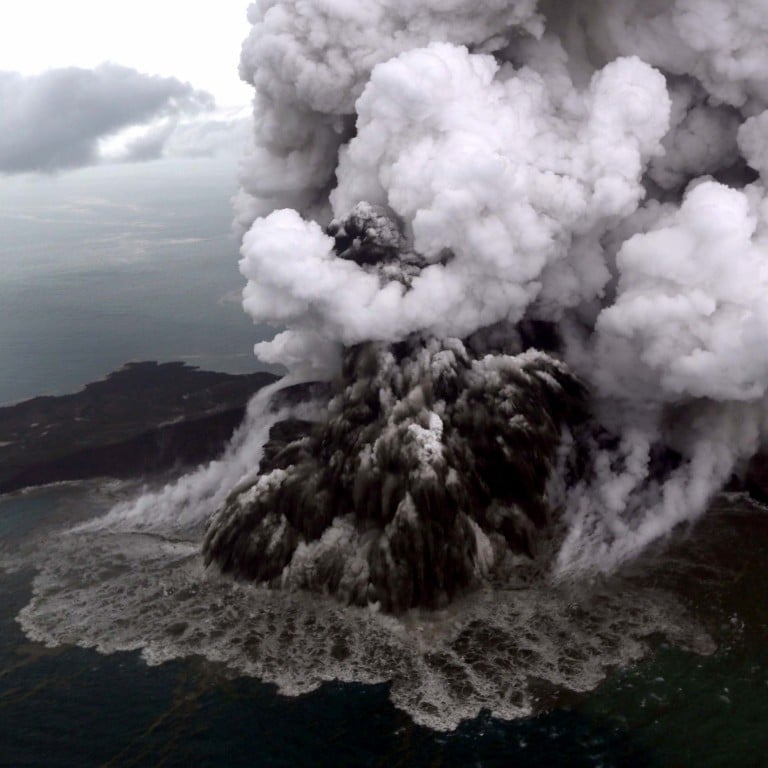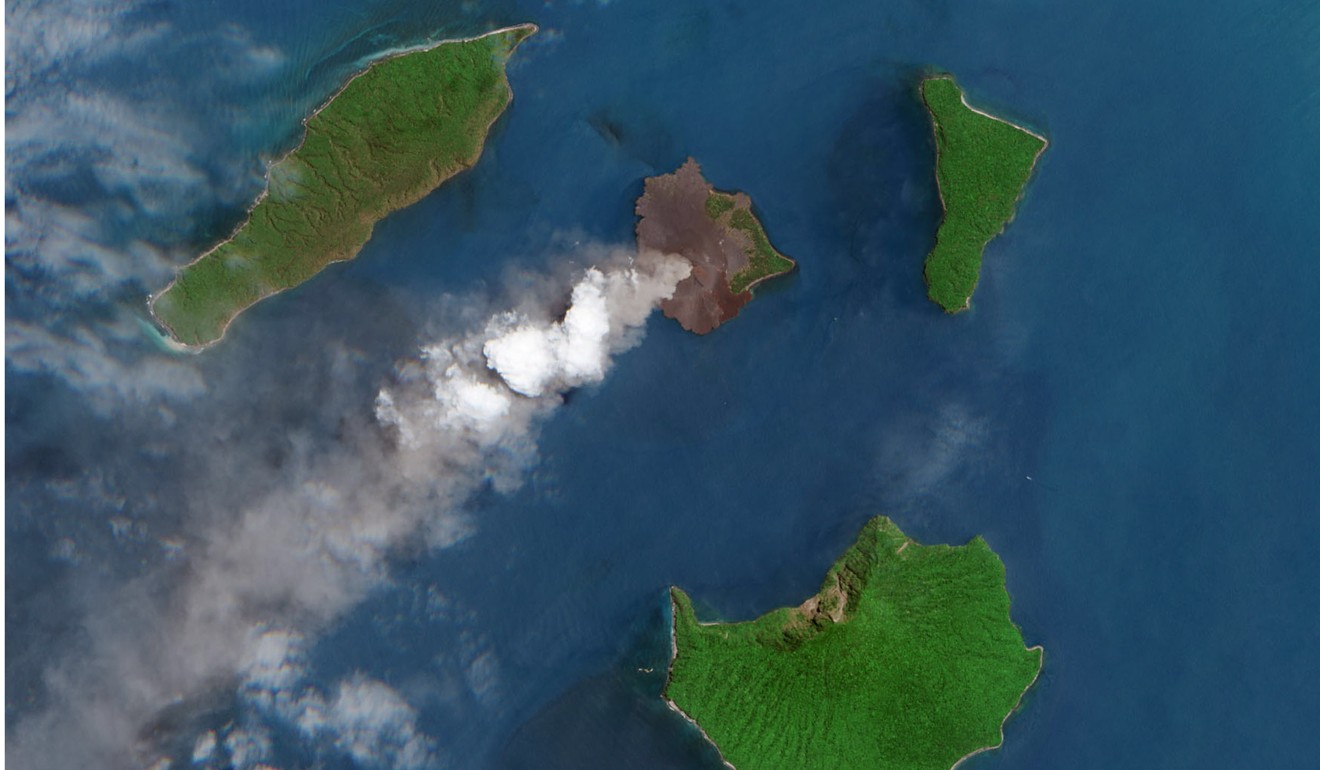
Tsunami from Anak Krakatoa eruption in Indonesia was 100 metres high, say scientists
- Over 400 people died when Indonesia’s Anak Krakatoa volcano erupted last December, triggering a massive tsunami
- Scientists simulated the wave’s speed and direction, estimating it could even have reached a height of 150 metres
In a paper in the journal Ocean Engineering, scientists from the University of Tokyo and Brunel University London used sea-level data from five locations surrounding Anak Krakatoa to validate computer models that simulated the speed and direction of the tsunami from the time the crater wall collapsed until it made landfall.

That wave quickly shrank, however, as gravity pulled it downwards and friction was generated between the tsunami and seabed.
Still, they point out, the wave was more than 80 metres high when it struck an uninhabited island just a few kilometres to the west of Anak Krakatoa, and the impact of a tsunami on that scale would have been devastating.
“Fortunately, nobody was living on that island,” Dr Mohammad Heidarzadeh, the lead scientist on the paper, told the Phys.org website.
“However, if there was a coastal community close to the volcano – say, within 5km – the tsunami height would have been between 50 metres and 70 metres when it hit the coast.”
The tsunami was between 5 and 13 metres high when it made landfall on Sumatra and Java about one hour later, causing 437 deaths and leaving a further 14,059 injured.

Although this was the deadliest volcanic eruption of the 21st century to date, it pales into insignificance when compared to the massive eruptions of Krakatoa in August 1883, one of the most violent and dramatic volcanic events in recorded history.
According to the Volcanic Explosivity Index, the biggest eruption was equivalent to 200 kilotons of TNT – about 13,000 times the nuclear yield of the nuclear weapon that was dropped on Hiroshima in 1945. The eruption ejected an estimated 25 cubic kilometres of rock and the explosion was heard 3,600km away in Australia.
Explained: Asia’s deadliest eruptions – and four volcanoes to watch
It generated a tsunami that struck surrounding coastlines at a maximum height of 42 metres and caused at least 36,000 deaths at a time when coastal areas were far less densely populated.
The detonation destroyed the island, although in the intervening 136 years Anak Krakatoa – Indonesian for “child of Krakatoa” – has risen above the waves at a rate of around 13cm a year.

Dr Heidarzadeh and his colleagues are working with the government of Indonesia to map the sea floor in areas surrounding the volcano and to develop a new tsunami resilience plan that will determine the locations of seismic faults and the risks that they pose. The study will also identify inhabited areas that are most at risk, propose countermeasures and make recommendations on how to improve public awareness of measures that can be taken in the event that a tsunami is imminent.
This comes shortly before the 15th anniversary of the 2004 Boxing Day tsunami, in which 220,000 people in coastal areas across the Indian Ocean died in a tsunami generated by a massive earthquake which struck off the coast of Sumatra.

